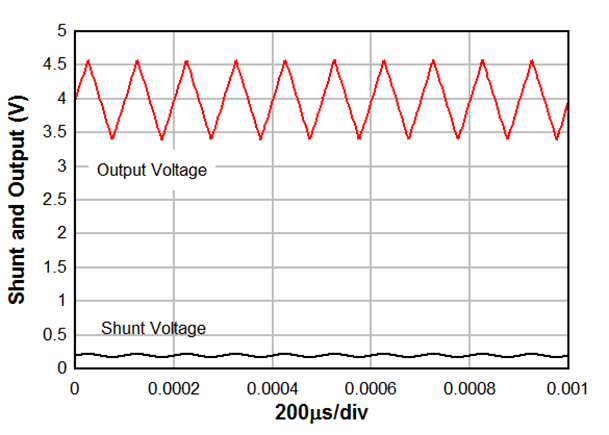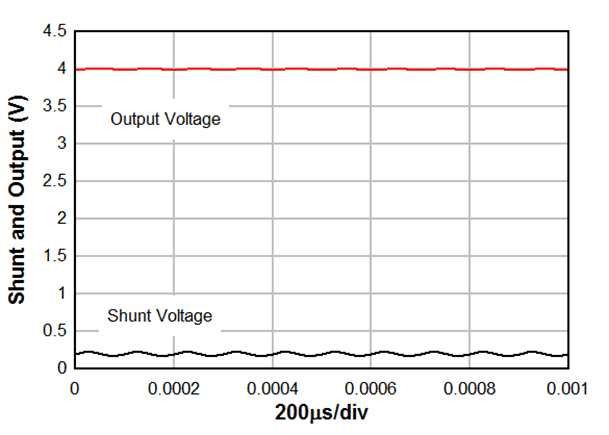SBOS938C October 2018 – June 2020 INA901-SP
PRODUCTION DATA.
- 1 Features
- 2 Applications
- 3 Description
- 4 Revision History
- 5 Pin Configuration and Functions
- 6 Specifications
- 7 Detailed Description
- 8 Application and Implementation
- 9 Power Supply Recommendations
- 10Layout
- 11Device and Documentation Support
- 12Mechanical, Packaging, and Orderable Information
Package Options
Mechanical Data (Package|Pins)
- HKX|8
Thermal pad, mechanical data (Package|Pins)
Orderable Information
8.2.3 Application Curves
Figure 20 shows the output waveform without filtering. The output signal tracks the input signal with a large ripple. If this current is sampled by an ADC, many samples must be taken to average the current digitally. This process requires additional time for sampling or operating at a higher sampling rate, which may be undesirable for the application.
Figure 21 shows the output waveform with filtering. shows the output waveform with filtering. The average value of the current with a small ripple can now be easily sampled by the converter without the need for digital averaging.

